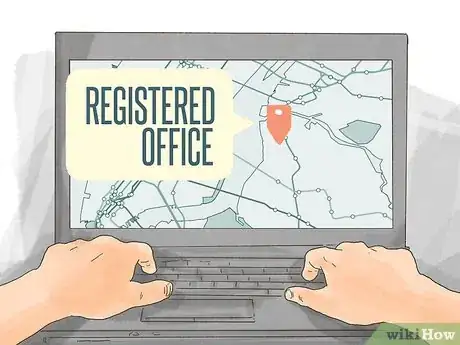This article was co-authored by wikiHow Staff. Our trained team of editors and researchers validate articles for accuracy and comprehensiveness. wikiHow's Content Management Team carefully monitors the work from our editorial staff to ensure that each article is backed by trusted research and meets our high quality standards.
There are 8 references cited in this article, which can be found at the bottom of the page.
This article has been viewed 68,210 times.
Learn more...
If you need to move your LLC (limited liability company) to a different U.S. state, there are several great options available. In this article, we’ll show you how to register the LLC as a foreign entity in your new state if you plan on moving back to the old state eventually, or file articles of domestication in your new state if you’re never going back. While all of the legal jargon, forms, and applications can be overwhelming, rest assured that this isn’t all that difficult. We’ll walk you through everything you need to know!
Steps
Registering as a Foreign LLC in Your New State
-
1Keep your LLC if you’ll do business in your old state. In some situations, it’s beneficial to register as a foreign (out-of-state) entity and keep your LLC registered in your old state. You’ll have to file reports, maintain licenses, and pay taxes in each state, but it’s worth it if your business will still be active in the old state or if you plan on moving back in the near future.[1]
- Keep in mind you’ll need to complete duplicate reports and file any annual paperwork required by each state.
- Your tax liability may also increase significantly. For example, if you originally formed your LLC in California, you’ll owe an annual franchise tax just to stay registered, even if you don’t make any income in California.
-
2Visit your new state’s secretary of state website. You can find specific information about foreign registry and access application forms on your new state’s secretary of state website. Search online for “business entities,” “secretary of state,” and the state’s name to find the right page.[2]Advertisement
-
3Complete a foreign registration application form. Find a link on the secretary of state website to your new state’s official application for foreign registry. In some states, you can complete and submit the form online. Other states require you to mail it or submit it in person.[3]
- You’ll enter information about your LLC’s original registration, including its name, date of registry, and the state where it was originally formed.
-
4Choose an alternate business name, if necessary. States have various rules about formatting an LLC’s business name. If your business includes words prohibited in the new state, or if there’s already a registered business with that name, you’ll have to choose an alternate name. If necessary, enter the alternate name into the designated field on the application form.[4]
-
5Select a registered agent for service of process in your new state. A registered agent is an individual or company that receives legal documents on behalf of your LLC. You’ll need to appoint a registered agent based in your new state and enter their information on the application form.[5]
- Most business owners use a registered agent service. Look online to find a company based in your new state.
-
6Provide a certificate of good standing from the original state. Precise names for this document vary by state; your old state might refer to it as a certificate of status, existence, or facts. You can order one from your old state’s secretary of state website.[6]
- You’ll be sent a printable digital copy of the certificate. Print it and include it with your foreign registration application if you’re filing via mail or in person. If you’re filing online, check your state’s instructions to see if you should upload or mail the certificate and any other supporting documents.
-
7Submit the application and pay the filing fee. File the application online, mail it, or submit it in person according to your state’s requirements. You’ll need to pay a filing fee when you submit the application, which is usually around $100 (USD). Processing times vary by state and time of the year, but you should receive a certificate of registry within 5 business days.[7]
- In some states, you’ll receive an email notification and digital copy of your certificate in as little as 24 hours.
-
8Obtain any required state or local licenses. Depending on the nature of your business, you’ll need licenses to operate in the new state. For example, if you’re opening a restaurant, you’ll need a food service license, liquor license, certificate of occupancy, and other permits required by your new jurisdiction.[8]
Domesticating Your LLC in a New State
-
1Ensure your new and old states allow domestication. Most states allow foreign (out-of-state) business entities to domesticate, or convert to a domestic (in-state) entity. However, if either your old or new state don’t allow domestication, you’ll need to register as a foreign entity with your new state or as a completely new LLC.[9]
- Registering a new LLC from scratch is undesirable, since you’d lose your employer identification number and business credit history.
-
2Complete an articles of domestication application. Head to the business entities section on your new state’s secretary of state website. Look for links to application forms for domestication or conversion (the precise name varies by state). Enter information about your LLC’s original formation, its initial and converted business name (if they differ), and the new designated office, or the business's address in the new state.[10]
- If your business name isn’t available in your new state, you’ll need to select a new one.
-
3Appoint a registered agent in your new state. Your business’s registered agent accepts documents for your business in the event of a lawsuit or other legal procedure. You’ll need to select a registered agent in your new state and list their information on the conversion application form.[11]
- Business owners usually prefer to hire a registered agent service. Look online to find a company based in your new state.
-
4Provide a certificate of good standing. Order the certificate on your old state’s secretary of state website. The certificate verifies that your business exists, that you’ve filed proper annual or biennial reports, and that you’re up to date on taxes. Include a copy with your conversion application form.[12]
- Ordering a certificate of good standing is free in some states. In others, ordering one costs between $10 and $20.
-
5Submit the application and pay filing fees. Depending on your state’s procedures, you’ll file the form online, in person, or by mail. Filing fees vary by state and could cost anywhere between $20 and $150. After submitting your application, you should receive a registration certificate within several business days.[13]
- If you need to expedite your application, you can usually pay to have it processed in 24 to 48 hours. Expediting your application can cost up to $500.
-
6Dissolve your old LLC after your application has been accepted. The most important part of the process is to domesticate first and dissolve second. If you dissolve first and your domestication application is rejected, you could find yourself without a business in any state. The dissolution process varies by state, but always involves filing articles of dissolution (or a certificate of dissolution) with the secretary of state.[14]
- Domesticating an LLC allows you to keep your bank accounts, lines of credit, credit history, and tax ID number. However, you'll need to update your business accounts with your new office address, phone number, and any other changes in contact information.
- You might need to submit a certificate of dissolution to your new state in order to finalize the domestication process.
-
7Apply for state or local licenses, if necessary. After you’ve domesticated your LLC, you’ll still need any licenses required to operate in your new location. Examples include liquor or food service licenses and signage permits. Look online or consult an attorney to learn more about your new jurisdiction’s applicable codes.[15]
References
- ↑ https://www.legalzoom.com/articles/can-an-llc-transfer-to-another-state
- ↑ https://www.nolo.com/legal-encyclopedia/how-move-your-llc-another-state.html
- ↑ http://www.sos.ca.gov/business-programs/business-entities/filing-tips/filing-tips-llc/#llc5
- ↑ http://bpd.cdn.sos.ca.gov/llc/forms/llc-5.pdf
- ↑ https://www.sba.gov/business-guide/launch/register-your-business-federal-state-agency
- ↑ http://www.sos.ca.gov/business-programs/business-entities/filing-tips/filing-tips-llc/#llc5
- ↑ http://www.sos.ca.gov/business-programs/business-entities/filing-tips/filing-tips-llc/#llc5
- ↑ https://www.forbes.com/sites/allbusiness/2017/01/18/10-key-issues-in-setting-up-an-llc/#343de05e633d
- ↑ http://www.sos.ca.gov/business-programs/business-entities/conversion-information/
- ↑ http://bpd.cdn.sos.ca.gov/llc/forms/llcconv.pdf
- ↑ http://bpd.cdn.sos.ca.gov/llc/forms/llcconv.pdf
- ↑ https://www.legalzoom.com/articles/can-an-llc-transfer-to-another-state
- ↑ http://bpd.cdn.sos.ca.gov/llc/forms/llcconv.pdf
- ↑ https://www.legalzoom.com/articles/can-an-llc-transfer-to-another-state
- ↑ https://www.forbes.com/sites/allbusiness/2017/01/18/10-key-issues-in-setting-up-an-llc/#343de05e633d











































































